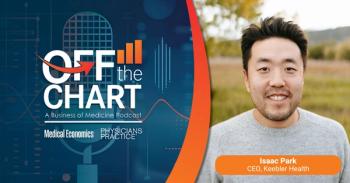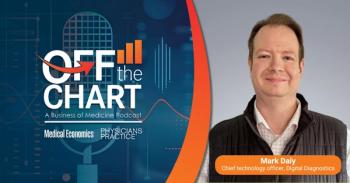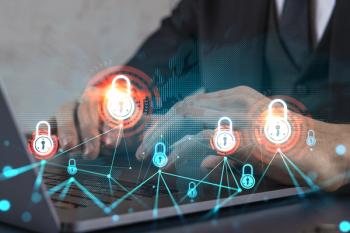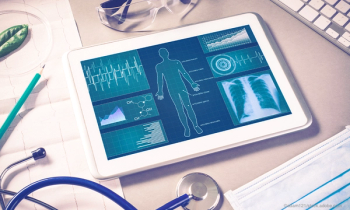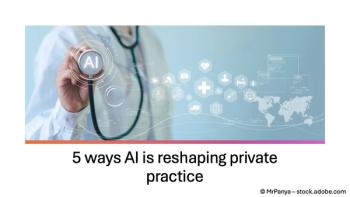
Take It With You
How and why groups are adopting handheld computers
A physician taps a stylus on a small screen, then tells her patient a new prescription will be waiting at the pharmacy. A few more taps code the visit, note it in the patient's record, and request any necessary lab work. Before the physician leaves the room, the chart is updated and all data is available to be submitted for electronic billing.
If your office decor features a pile of paper charts, this scenario might sound far-fetched, and for all but a handful of practices, this level of coordination remains a dream. But technology research firm Forrester Research predicts that while only 11 percent of practices use handheld devices for electronic prescribing today, 86 percent anticipate doing so by 2003. Similarly, 77 percent plan to use a handheld for charge capture, and 80 percent are headed for electronic charting.
In other words, handhelds will be near-ubiquitous in practices by this time next year -- and they will be used as more than just fancy address books. In deciding which palm-enabled applications to adopt, you'll need to consider your particular needs and how you can you ensure a healthy return on your investment.
Prescription for savings
As Forrester's data suggests, mobile applications for prescription writing already are popular, partly thanks to patients.
"My patients really like it, because I can write prescriptions from the exam room ... and by the time the patient gets to the pharmacy, the prescription is ready. So if they have a sick kid, they don't have to wait for the prescription to be filled," says Dan Diamond, MD, who has used a handheld prescription-writing application for two years at his office outside Seattle. He also looks up dosing and drug interactions and reviews formularies on the Palm.
While the system helps patients, it also has helped Diamond's office become more efficient. For example, when Diamond writes a prescription electronically, he sends it to the pharmacy via his wireless network -- meaning he doesn't have to take time out to synchronize the data with his desktop system.
He isn't constantly interrupted by refill requests, because his nurse simply logs on to the Internet to process refills after reviewing them with Diamond. Some cases are even simpler; Diamond has authorized his nurse to handle certain refills, such as an interim birth control refill, automatically. A "favorites" category lets Diamond input regularly prescribed medications with a few quick clicks. And the program slashes pharmacy phone tag by incorporating formulary information.
The system's hardware costs were minimal -- besides his Palm Pilot, he spent about $500 for both a wireless network card and a network port, which Diamond (who acknowledges he is "techno-savvy") installed himself in 15 minutes. The ePhysician program Diamond uses costs $600 annually for each physician's user license (staff can use the Web-based portion of the program for free).
Diamond hasn't measured his return on investment, but he says, "My hunch is that I can see one or two additional patients a day [because of the system] -- it is significant if you add it up at the end of the month." For a family practice like Diamond's, an additional 30 patients a month could amount to nearly $1,000 in revenues, based on Medical Group Management Association (MGMA) data estimating the average gross revenue for family practice visits at $32.
While Diamond is satisfied with his system, he notes that picking the right software can make all the difference between revenue enhancement and revenue depletion. Diamond also considered e-prescribing software that, instead of sending new prescriptions to the pharmacy electronically, required the physician to print the order and give it to the patient. Diamond estimates that the additional time required to print and send an average of 15 prescriptions daily could add up to 45 minutes a day or $4,500 a month in lost revenues. On the other hand, some physicians may prefer having a paper trail, despite the cost.
In short, while e-prescribing looks promising, make sure to look carefully at the workflow and demands of your particular practice before choosing your software.
Lasso charges
Charge capture is the second biggest growth area for practice management-based handhelds. Here's how it typically works: After a patient visit, a physician completes an electronic charge document on his handheld, pulling from a customizable list of procedures, diagnoses, and ancillary services. A rules engine -- set by the practice -- alerts the physician to incomplete or erroneous data. The charge is immediately ready to be reviewed by the billing office and sent on to the payer. The result? Faster payments and better cash flow. Paper can't keep up.
Multispecialty Carle Clinic in Urbana, Ill., for instance, had a terrible time getting charges out the door using a paper system. "From the time a physician filled out a paper document until that document reached our central system, we were averaging a seven-day delay -- including quality assurance and several steps of coding edits," explains Debbie Rivers, manager of systems support at Carle Clinic.
However, when physicians use the clinic's new system from MDEverywhere, "we can have a one-day turnaround," Rivers says. Carle Clinic's goal is to have 98 percent of charges enter the billing system within three days; its old target was to have 90 percent of paper charges submitted within seven days.
While a faster turnaround is an obvious win, the new charge capture system does have a downside: reduced physician productivity -- at least in the beginning. Initially, Carle Clinic estimated electronic charge capture would add 30 to 45 minutes to a physician's day, but it still seemed worthwhile to Rivers.
"For physicians, it took 10 seconds to write charges on a piece of paper; but the cost goes up with the number of hands that paper had to travel through to get to the billing system," she says -- not to mention the cost of lost revenue for hand-written charges that never make it into the system. "We had to review the cost of all those hands versus the physician taking an extra 15 seconds to 30 seconds to do charges electronically."
In fact, Rivers was pleasantly surprised -- after a user has about two weeks of experience, the new system is as fast as the old one. Consequently, the practice has seen an increase in efficiency, with actual costs running at 65 percent of the paper-based system costs.
Carle Clinic speeds things up with careful training and transition. One-on-one physician training and "super users" -- desk staff coordinators -- in each clinic location support other users. "We have trained all types of computer skill levels -- from those who won't read e-mail to those who want every new gadget out there," Rivers says. She notes that the new system met resistance at the beginning, but after training and practice, not one participant has gone back to paper. Rivers expects to have more than 200 of Carle's 300 physicians using the charge capture application by the end of 2002.
Choose carefully
As Rivers and Diamond both found, electronic products are not all created equal. Before choosing an application, practices should evaluate how it will be used. A major problem area for many is integration with existing or planned systems.
Some e-prescribing and drug-reference applications, for example, aren't integrated with patient care systems. For now, many physicians find the usefulness of these programs outweighs their stand-alone nature. Time will tell, as more physicians implement a larger number of more powerful handheld practice management applications, whether that usefulness continues to make it worth juggling another application.
For some, the juggling act is paying off now. Bruce Bagley, MD, and the family practice physicians in the two offices of Latham Medical Group, in Albany, N.Y., adopted a dual system using ePocrates on handhelds alongside a NextGen electronic medical record (EMR) on a small portable device.
Using what Bagley describes as a "glorified handheld" -- a wireless computer with a keyboard and touch screen -- physicians can review charts, enter notes directly into the EMR, then order blood work -- and have the nurse waiting outside the door with bar-coded test tubes for the draw as soon as the doctor wraps up the visit.
Once Latham Medical selected an EMR, "our system didn't give physicians a choice to opt out," Bagley says. Latham Medical ramped up slowly, initially using handhelds only for interoffice messaging and prescription writing.
"Even the reluctant ones didn't last long, maybe a month," says Bagley. "They realized how efficient it is -- when someone comes in with 12 medications needing to be renewed and a long last name, you can just push 'renew.' The system was so functional, they were just captured by it.
"Most doctors recognize immediately that prescription writing is a good deal," Bagley adds. "So we gave it to them as a reward for making harder transitions, like beginning to use the electronic medical record."
Latham Medical considered using a stand-alone prescription writing utility. Instead, the group chose to use the EMR's prescription writing function because it automatically records printed or faxed prescriptions in patient charts. But for drug reference questions, Bagley turns almost daily to ePocrates, the free drug reference program he downloaded from the Internet a couple of years ago.
The program lets him examine medication side effects, substitutions, pricing information, and formularies -- all from within the exam room. For Bagley, having that kind of information on his Palm gives him handy expertise -- and credibility with patients.
'Collateral benefits'
If Forrester's predictions are right, most physicians are doing some serious thinking about electronic applications. Even in an ideal world, selecting the best vendor can be tricky. Crucial to any decision are examining the chosen vendor's stability as well as how a handheld application can connect with your charting and claims filing systems. In the long run, the opportunities to reinvent an entire practice's efficiency will recruit more medical offices to the handheld army.
"Physicians are more likely to use handhelds not because they save time or at least break even, but because of collateral benefits to the rest of their operation," says Brad Holmes, senior analyst with Forrester. "If you find an application that becomes more valuable, not as a time saver for the physician, but because of its integration with the practice management system -- that makes a heck of a lot more sense."
Susanna Donato can be reached at
This article first appeared in the Spring 2002 issue of Physicians Practice.
Newsletter
Optimize your practice with the Physicians Practice newsletter, offering management pearls, leadership tips, and business strategies tailored for practice administrators and physicians of any specialty.

